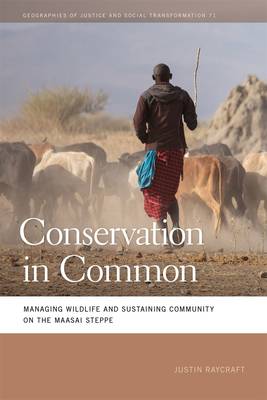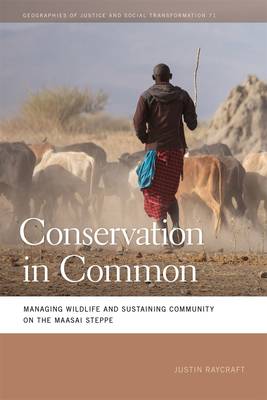
- Afhalen na 1 uur in een winkel met voorraad
- Gratis thuislevering in België vanaf € 30
- Ruim aanbod met 7 miljoen producten
- Afhalen na 1 uur in een winkel met voorraad
- Gratis thuislevering in België vanaf € 30
- Ruim aanbod met 7 miljoen producten
Zoeken
Conservation in Common
Managing Wildlife and Sustaining Community on the Maasai Steppe
Justin Raycraft
€ 45,95
+ 91 punten
Uitvoering
Omschrijving
Wildlife conservation in Tanzania is fraught with conflicts between the state, international organizations, private investors, and local communities over the rights to rangeland resources and the benefit streams associated with safari tourism. This book takes up the question of how a Wildlife Management Area (WMA) in Tanzania's Tarangire ecosystem is viewed from the bottom up, by the people who are directly affected by its implementation. Based on historically grounded ethnographic research, Justin Raycraft documents a shift in local attitudes toward Randilen WMA--from fear and protest to widespread support. He analyzes this process of transformation in the context of empathetic management practices that have fostered feelings of trust and uncovered common ground between conservation stakeholders. Raycraft shows that although WMAs are not fully devolved to the local level, pastoral communities can use them to defend the things they value most: their land and livelihoods. Conservation in Common makes a much-needed intervention in critical political ecology literature by providing the first account of a conservation area in Tanzania that serves the interests of its local community, thereby making the case that protecting wildlife habitat and safeguarding human well-being are not mutually exclusive activities.
Specificaties
Betrokkenen
- Auteur(s):
- Uitgeverij:
Inhoud
- Aantal bladzijden:
- 229
- Taal:
- Engels
- Reeks:
Eigenschappen
- Productcode (EAN):
- 9780820374796
- Verschijningsdatum:
- 1/12/2025
- Uitvoering:
- Paperback
- Formaat:
- Trade paperback (VS)
- Afmetingen:
- 152 mm x 229 mm
- Gewicht:
- 312 g

Alleen bij Standaard Boekhandel
+ 91 punten op je klantenkaart van Standaard Boekhandel
Beoordelingen
We publiceren alleen reviews die voldoen aan de voorwaarden voor reviews. Bekijk onze voorwaarden voor reviews.








